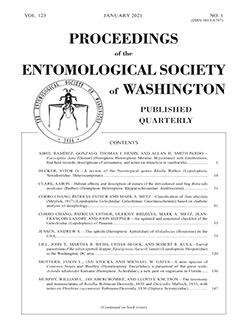The brown marmorated stink bug (BMSB), Halyomorpha halys (Stål), is a polyphagous, invasive insect of economic concern to agricultural production in North America. It was first discovered in Utah in 2012; crop damage was first reported in 2017. We propose that northern Utah's high elevation agricultural regions (> 1200 m), arid climate, and small-scale production fields surrounded by suburban development may invoke differences in BMSB attraction to baited traps and, thereby, influence the effectiveness of monitoring protocols compared with other BMSB-invaded regions. To evaluate these potential differences, we sampled the BMSB along transects with pyramid and sticky panel traps and visual plant inspections at nine orchard and community garden site-years (< 2.5 ha). Sites were selected to represent common specialty crops grown in Utah, including peach, apple, pear, tart cherry, and diverse vegetables. Sampling was conducted in four locations within sites; exterior, border, border-interior, and center; and in early, mid-, and late seasonal periods. Results did not support a BMSB preference for field-site borders as found in other regions and crop situations of the United States. Pyramid traps attracted significantly more BMSB than sticky panel traps throughout the growing season, and significantly more BMSB than visual plant inspections in the mid- and late season. Visual monitoring may be a cost-effective BMSB detection strategy when conducted near pheromone-baited traps in the early season. Overall, positive correlations between pyramid and sticky panel trap catch was weak in both 2018 and 2019. Therefore, we suggest that pyramid traps, especially in combination with visual plant inspections, are optimal for monitoring and detecting BMSB in the Utah agricultural landscape where populations are relatively low and field size is < 2.5 ha. Additionally, border-focused management strategies may be less effective in Utah compared with regions with higher BMSB infestations, larger field sizes, and adjacent agricultural or natural landscapes.
How to translate text using browser tools
29 January 2021
Behavior of the Brown Marmorated Stink Bug, Halyomorpha halys (Stål) (Hemiptera: Pentatomidae), in the Utah Agricultural Landscape Based on Trap Captures and Visual Sampling Studies
Zachary R. Schumm,
Diane G. Alston,
Lori R. Spears
ACCESS THE FULL ARTICLE
Border effects
Landscape-level effects
Suburban-agriculture Interface
trapping





